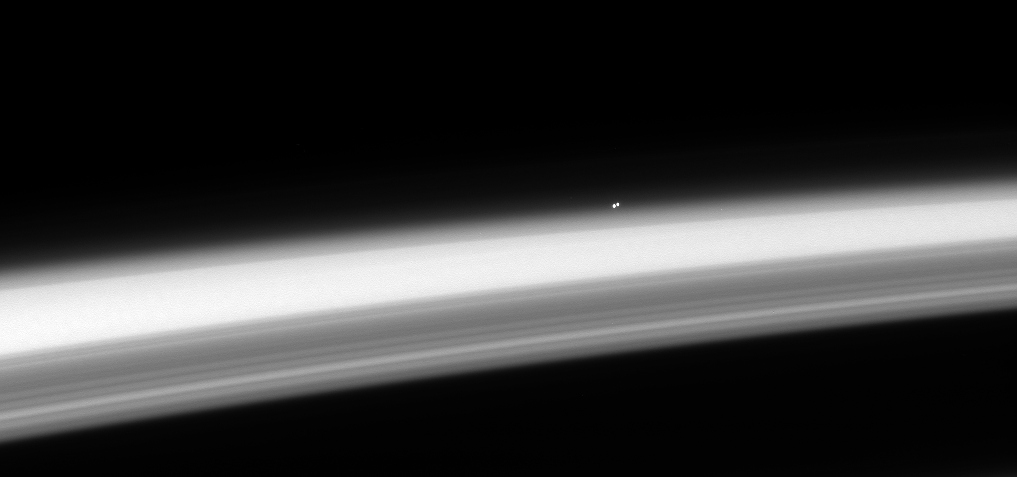
Cassini resolves Centauri A & B with Saturn's rings in the foreground.
The sun's closest companion is part of the Alpha Centauri star system. This is a system of three stars meandering about each other. The brightest star of the bunch is Alpha Centauri A (at a distance of 1.35 parsecs, or 4.4 lighyears) which is orbiting a slightly dimmer companion Alpha Centauri B every 80 years or so. They are separated by about 20 AU (that's 20 times the average distance from earth to the sun), but to the unaided eye they look like a single bright star in the sky. This is indeed the closest "star" that can be seen at night without a telescope. The last star in the system is Alpha Centauri C or Proxima Centauri (at a distance of 1.29 parsecs, or 4.22 light years) and it is the closest star. It is a dim, red, cold, small star. It is relatively distant from Centauri A/B, but it is thought to be gravitationally bound and in a slow orbit around these two stars (Is Proxima really in orbit about Alpha Centauri A/B?) with a period of about one million years. If Proxima Centauri is in orbit about Centauri A/B then it may not be the closest star during certain periods of orbit; the closest star to earth would alternate. Of course, the entire system has an extremely large proper motion such that in a million years it wont even be the closest star system any longer.

well, i for one am so glad somebody finally said it.
ReplyDelete